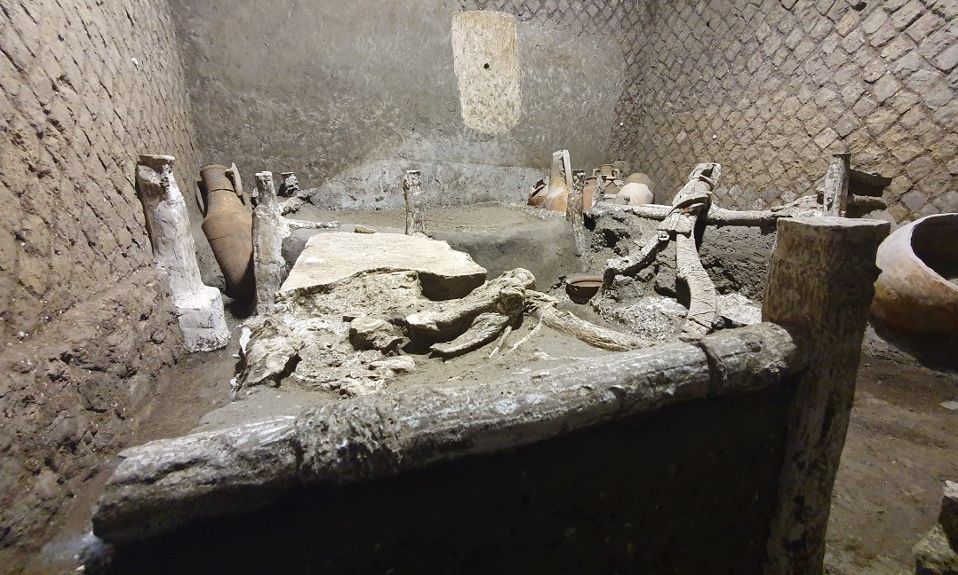'The room of Slaves', an exceptionally well-preserved room for the slaves who worked in Villa Civita Giuliana in Pompeii. Courtesy of Pompeii Archaeological Park
A room used by enslaved people has been unearthed at the Roman city of Pompeii during excavations at the Civita Giuliana, a suburban villa northwest of the ancient site which was engulfed by volcanic ash in 79AD spewing from Mount Vesuvius.
The slaves' living quarters contain three wooden beds—two for adults, the other for a child—a chamber pot, a wooden chest filled with metal and fabric items and a chariot shaft which may have been prepared and maintained by the slave family who carried out domestic chores in the villa.
In a statement posted on Instagram, Pompeii officials say that “the room grants us a rare insight into the daily reality of slaves, thanks to the state of preservation of the room and the possibility of creating plaster casts of beds and other objects… which have left their imprint in the ash that covered the ancient structures.” Preservation techniques involve pouring liquid plaster into the cavities left by the bodies, creating casts of the impression in the ash.
Gabriel Zuchtriegel, director of Pompeii’s archaeological park, said the discovery gives a rare insight “into the precarious reality of people who seldom appear in historical sources, that were written almost exclusively by men belonging to the elite”.
The recent excavation is part of a programme launched in 2017 aimed at combating looting at the Civita Giuliana villa. In a statement posted earlier this year, Pompeii officials said: “The ongoing excavation project has a dual objective: firstly, to cooperate with the investigations of the Public Prosecutor’s Office of [the region] Torre Annunziata, in order to bring an end to the looting of cultural heritage by perpetrators who had dug several tunnels in the area in order to seize archaeological treasures; secondly, to reveal one of the most significant villas of the Vesuvian area and to protect it from further looting.”
Last November, archaeologists also discovered the bodies of two men at the same villa, identified as a wealthy landowner and his slave, who both escaped the initial eruption on 24 October 79AD, only to be killed by a blast on 25 October

